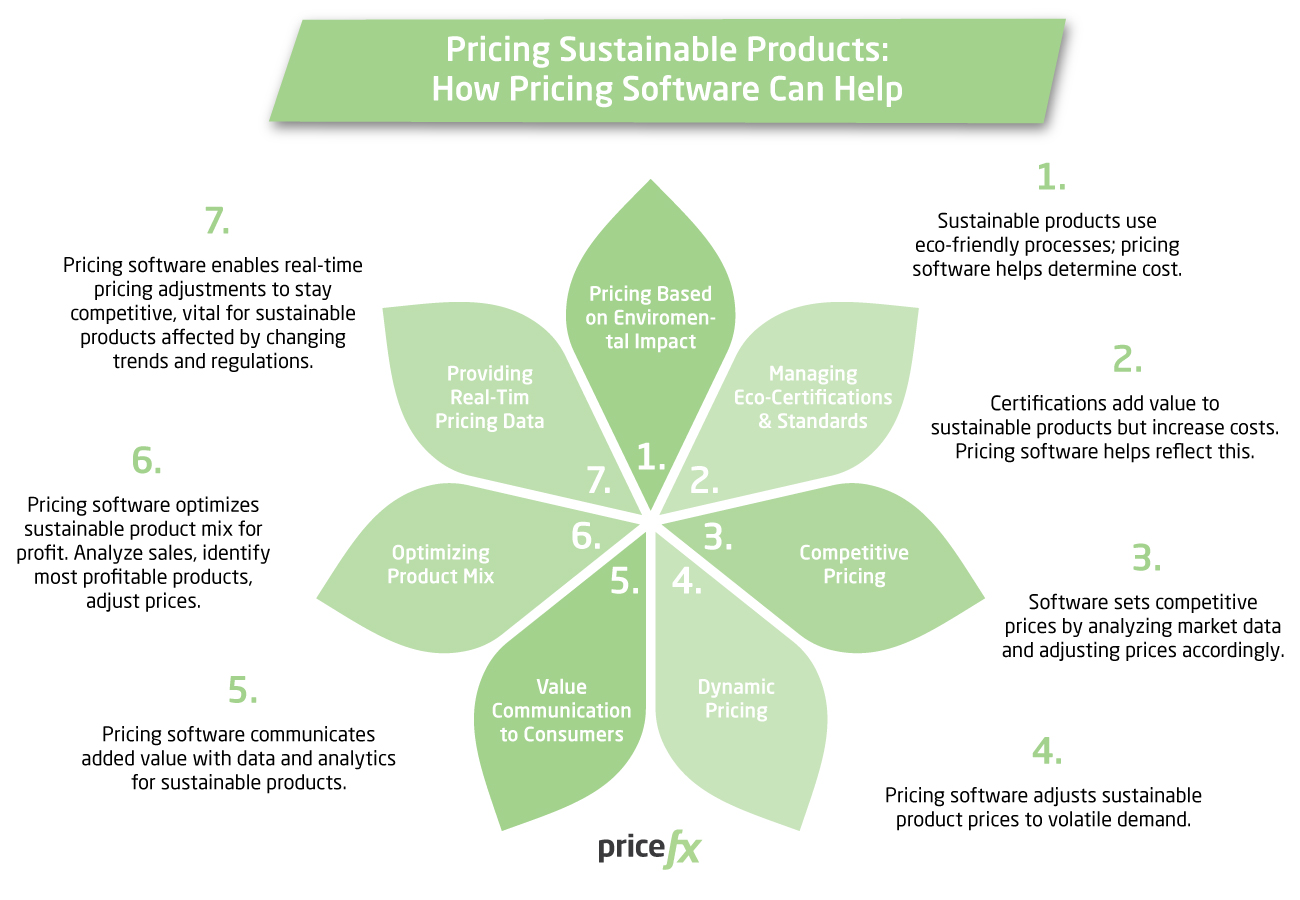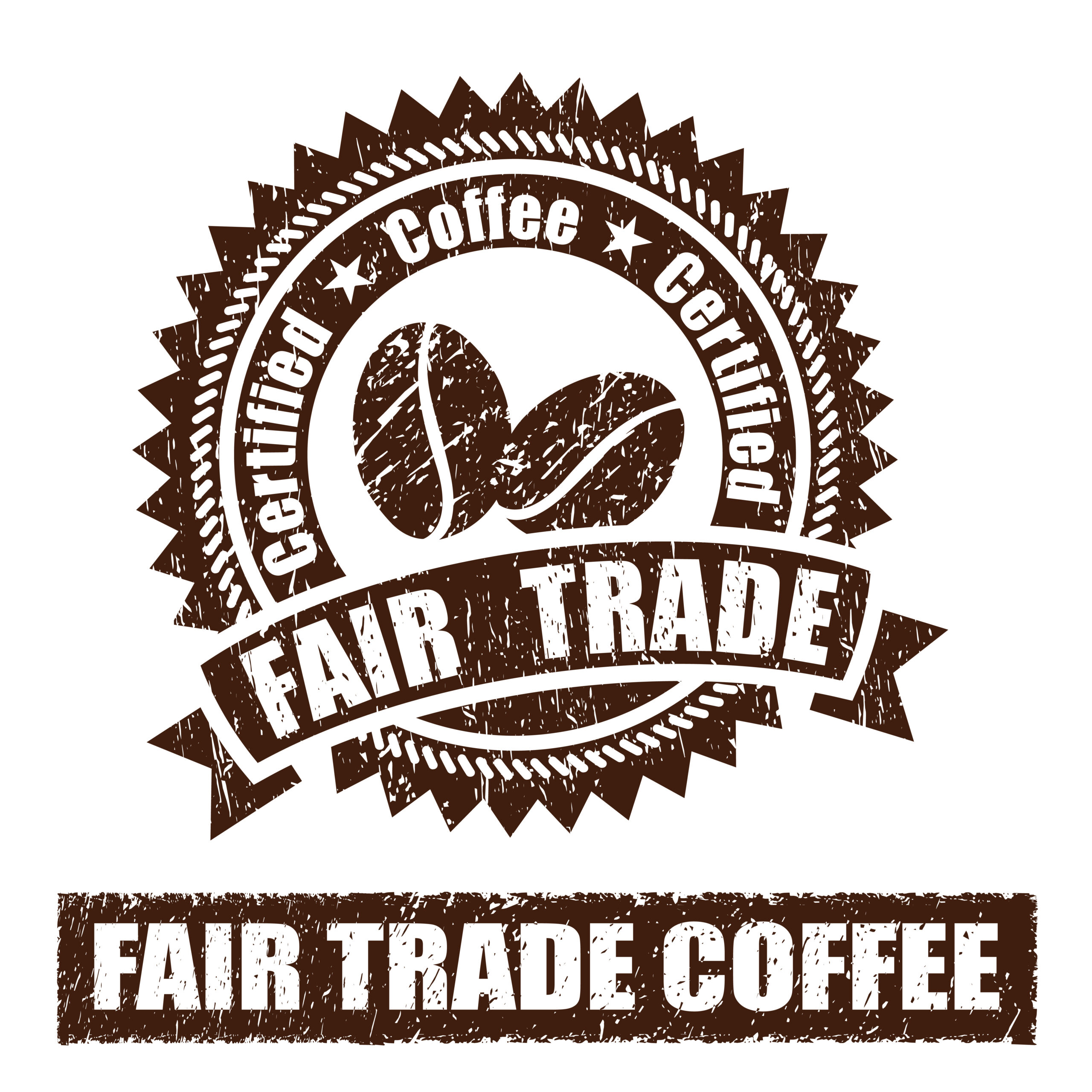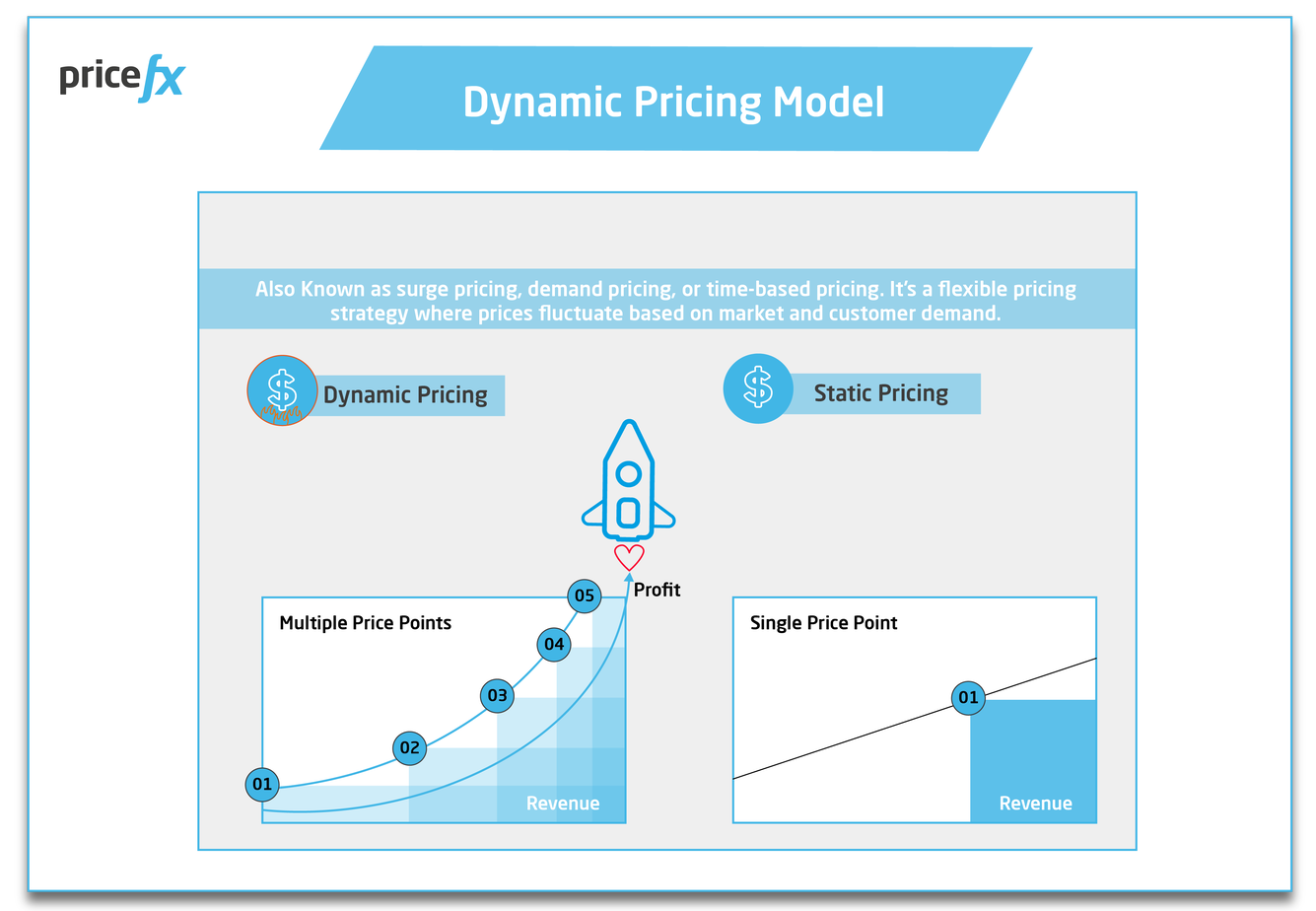Pricing Sustainable Products: How Pricing Software Can Help
April 17th, 2023 | 9 min. read
Pricing sustainable products can be a complex and challenging task for many businesses. On the one hand, businesses need to ensure that their pricing reflects the true value of their products, considering the environmental and social benefits they offer. On the other hand, they also need to make sure that their prices are competitive and attractive to consumers. After all, if the products are not making money, then unsustainable products may re-emerge as market leaders and who wants that? Striking the balance is no easy feat, and many businesses struggle to price their sustainable products accurately and profitably, which becomes even more challenging when economic conditions are tight. Fortunately, pricing software can help make this process easier and more efficient, helping businesses to navigate the complexities of sustainable pricing and still stay ahead of the curve.
Over the last decade, Pricefx has been at the forefront of helping businesses price their products effectively. By leveraging advanced pricing software and analytics, Pricefx has helped companies streamline their pricing processes and make data-driven decisions, ensuring that all their products including sustainable goods are priced accurately and competitively. With cutting-edge technology and unparalleled expertise, Pricefx continues to be a trusted partner for businesses looking to price their green products effectively and profitably.
In this article, we firstly define what sustainable products are exactly and second up, examine the challenges that can confront businesses that are looking to price their sustainable products competitively and profitably. We will finish by looking at 7 methods whereby pricing software can assist organizations to price their sustainable products in line with their unique set of business objectives.
What Are Sustainable Products?
Sustainable products are goods and services that are designed and produced with the goal of reducing their environmental impact and preserving natural resources. These products are created with a focus on minimizing waste, conserving energy, and reducing greenhouse gas emissions. Sustainable products can take many different forms, from energy-efficient appliances to organic clothing to reusable grocery bags.

The rise of sustainable products is driven by growing awareness of environmental issues and a desire among consumers to make more responsible purchasing decisions. Many businesses have also embraced sustainable practices as part of their corporate social responsibility initiatives. By producing sustainable products, businesses can reduce their environmental impact and appeal to a growing segment of environmentally conscious consumers who prioritize sustainability when making purchasing decisions.
Why Pricing Sustainable Products is a Challenge for Businesses
Pricing sustainable products can present business challenges to organizations for a range of reasons. Over time as sustainability eventually becomes the norm for many companies some of these pricing challenges may fade away, however, while many businesses are still in transition phase the following issues are common issues to overcome;
- Higher production costs: For the time being at least, sustainable products often require the use of more expensive materials, production processes, and certifications. This can result in higher production costs, which can be challenging to recoup through pricing without making the product unaffordable for consumers.
- Limited market demand: While there is a growing demand for sustainable products, it is still a niche market across many industry sectors. This means that businesses may struggle to find a large enough customer base to justify the higher prices associated with sustainable products.
- Difficulty in managing complex pricing structures: Pricing sustainable products often involves complex pricing structures, which can be challenging to manage without the right tools. For example, businesses may need to account for different pricing tiers based on production costs, supplier costs, and environmental impact. Without pricing software, businesses may struggle to efficiently manage these pricing structures, resulting in pricing inconsistencies and lost revenue.
- Lack of industry standards: There is a lack of industry standards for sustainable products, which can make it challenging for businesses to determine how to price their products. Without clear standards, businesses may struggle to communicate the value of their sustainable products to consumers and justify the higher prices.
- Competition: As sustainability becomes more mainstream, more businesses are entering the market with their own sustainable products. This increased competition can make it challenging for businesses to differentiate themselves and justify their pricing, especially if they are unable to clearly communicate the unique benefits of their sustainable products.
- Consumer perception: Consumers may not always understand the added value of sustainable products or may not be willing to pay higher prices for them. This can make it challenging for businesses to convince consumers to pay more for sustainable products, even if they are more environmentally friendly or ethically produced.
The good news is of course, that pricing software can assist in overcoming these challenges.
7 Ways that Pricing Software Can Help with Sustainable Product Pricing
Sustainable products present unique challenges that can be effectively addressed with pricing software. Here are 7 ways that pricing software can specifically help businesses price their green and sustainable products:

1. Pricing Based on Environmental Impact
Sustainable products are often associated with environmentally friendly production processes, materials, and packaging. Pricing software can help businesses factor in the environmental impact of these aspects to determine the genuine cost of producing and selling their products.
For example, a clothing manufacturer using organic cotton and water-saving production processes could use pricing software to account for the added costs of these sustainability measures, ultimately pricing their products effectively.
2. Managing Eco-Certifications and Standards
Many sustainable products are certified by third-party organizations to ensure that they meet specific environmental or social standards. These certifications can add significant value to the product but can also increase production costs.
Pricing software can help businesses account for these costs and ensure that their sustainable products are priced to reflect the added value of these certifications.

For example, a coffee roaster using Fair-Trade certified beans could use pricing software to ensure that their pricing accounts for the additional cost of sourcing and processing the Fair-Trade beans.
3. Competitive Pricing
Sustainable products face competition from traditional products that may be priced lower but have a higher environmental impact. Pricing software can help businesses determine the optimal pricing strategy to compete with these products. By analyzing market data, pricing software can help businesses identify pricing thresholds and adjust prices accordingly.
With the emergence of sustainable products, it is becoming more common that a direct competitor may exist. With the use of pricing software, you can ingest the data associated with your direct competition and use that data to develop a competitive pricing strategy.
For example, a manufacturer of reusable and sustainable water bottles could use pricing software to analyze the prices of traditional plastic water bottles produced by less innovative competitors and determine an optimal pricing strategy that considers the added value of their sustainable product.
4. Dynamic Pricing
Sustainable products often face fluctuating demand due to seasonality or changing consumer trends. Pricing software can help businesses set dynamic pricing strategies that adjust prices based on volatile changes in demand.

For example, a company selling solar panels and storage batteries could use pricing software to adjust prices based on changes in demand for solar energy during different seasons., e.g., charge less in winter when demand is weakest and higher prices in summer when demand for solar energy solutions skyrockets.
5. Value Communication to Consumers
Pricing sustainable products often requires businesses to educate consumers on the added value of their sustainable products. Pricing software can help businesses communicate this value to consumers by providing data and analytics that show the environmental and social impact of their products.
For example, a manufacturer of electric bikes could use pricing software to display the savings in transportation costs that result from using an electric bike, ultimately justifying the higher price tag of their sustainable product.
6. Optimizing Product Mix
Sustainable product lines may potentially include goods with diverse levels of sustainability, and pricing software can help businesses optimize the product mix to maximize profits. What that means is by analyzing sales data and pricing trends, pricing software can identify which sustainable products are most profitable and adjust prices accordingly.

For example, a retailer selling eco-friendly cleaning products could use pricing software to identify which products are most popular and adjust prices to optimize their product mix and maximize profits.
7. Providing Real-Time Pricing Data
Pricing software provides businesses with real-time pricing data, allowing them to respond quickly to changes in the marketplace. This is particularly important for sustainable products, which may face changes in demand due to new and continually shifting government regulations, consumer trends, or environmental events.
With the use of pricing software, organizations can adjust their pricing strategies in real-time as the changes occur to stay competitive and profitable.
For example, a company selling electric vehicles could use pricing software to adjust prices quickly in response to new government incentives, council by-laws being passed on providing charging stations or rapidly changing consumer uptake of sustainable transportation methods.
Adapting Your Pricing for Today’s Future Right Now
Sustainable products present a unique set of challenges when it comes to pricing, however, pricing software such as Pricefx’s award-winning solution can help businesses ensure that their sustainable products are priced accurately, competitively, and sustainably, while also driving profitability.
With its advanced pricing optimization and management capabilities, pricing software can help businesses of all sizes achieve these goals and stay ahead of the curve in the ever-changing world of sustainable products, and achieve your company’s goals for a better, more sustainable future.
Regardless of whether your business is interested in sustainable products or not, with pricing software, you can be armed with the ability to quickly identify market trends, adjust pricing methods on the fly, make data-driven decisions to stay ahead of the competition and set a complete pricing strategy.
To learn more, check out the handy article below on how to set a comprehensive pricing strategy:
Or if you would like to learn more specifics on how our pricing software solution could help your business achieve its goals, talk to one of our experts now.
